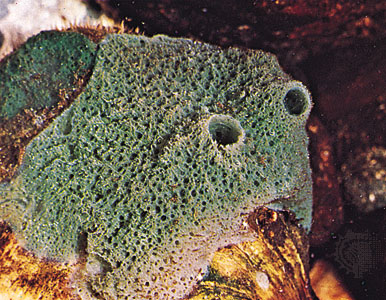Living freshwater chests of drawers belong to 45 genera of 6 families, for a total of 219 species. There are many different types of sponges, but of the more than 5,000 species identified by scientists around the world, less than 12 are actually harvested for commercial use. Of the types of sponges harvested for commercial use, wool, yellow and glass sponges are some of the most versatile and usable sponges available. Most families live in freshwater environments such as Spongilia la custris and Ephidatia, but most live in marine environments. fluviatilis has been reported. They are leuconoid types. In addition to bath sponges, there are other related genera belonging to this class, such as Tenea, Cliona, Mienia, Poterion, Callyspongia. Most sponges are found in the sea, but many species are also found in freshwater and estuaries. Regardless of these differences, sponges are an important inhabitant of coral reef ecosystems. A diverse population of sponges can affect the water quality of coral reefs as the sponges filter water, collect bacteria, and process carbon and nitrogen. Freshwater sponges breed both sexually and asexually. Asexual reproduction is mainly carried out by budding and precursor cells. The internal buds formed by the freshwater sponge are called precursor cells. These precursor cells are tough and covered with dormant clusters of germ cells.
How many types of sponge are there?
Sponges are sometimes a common type of diverse group, with about 5,000 known species worldwide. Sponges are mainly marine, but about 150 species live in freshwater.
What kind of sponge is a freshwater sponge?
Freshwater sponge, one of about 20 species of the genus Spongilla (class Demospongiae, siliceous sponge), a common, widespread group. Spongilla species are found in clean lake waters and slow streams. Freshwater chests of drawers are delicate in structure and grow as overlying or branched masses.
Where is the sponge in the sea?
Spongilla species are found in clean lake waters and slow streams. Freshwater chests of drawers are delicate in structure and grow as overlying or branched masses. They usually look greenish due to the algae that inhabit them. Freshwater sponges can reach volumes in excess of 2,500 cubic centimeters (150 cubic inches).
How do freshwater chests of drawers breed?
Sponges can propagate through these small round precursor cells that can hatch and form new sponges. Freshwater chests of drawers are immobile organisms that live at the bottom of the body of water. They are invertebrates (without spine) and have no organs, but instead have special cells that help them filter water for food.
Do you have a freshwater sponge?
More than 8000 species of sponge are recognized, of which less than 250 are freshwater sponges. All modern freshwater sponges belong to the phylum Sponge, Demosponge, Haproscleridas, and Tansuikaimen. 2018
How many types of sponges are there in freshwater and marine environments?
There are about 5,000 to 10,000 types of sponges mainly found in the marine environment, and about 100 types of freshwater sponges. They are found in a very wide range of habitats, from the intertidal zone to a depth of about 9,000 meters, and from the polar regions to the tropics.
What percentage of sponge lives in freshwater?
Freshwater sponges make up less than 3% of the total 10,000 species of modern sponges on Earth, most of which are marine.
Are most sponges freshwater?
Most of the sponges live in marine habitats, but one family, Spongillidae, has been found in freshwater. Calcareous sponge, Hexactinellid, Demosponge, and Homoscrelomorpha make up four classes of sponges. Each type is categorized based on the presence or composition of its spicule or spongin.

Below you will find two helpful answers on a similar topic. 👇
What does a blind from birth person see?What characteristics do blind people have?
